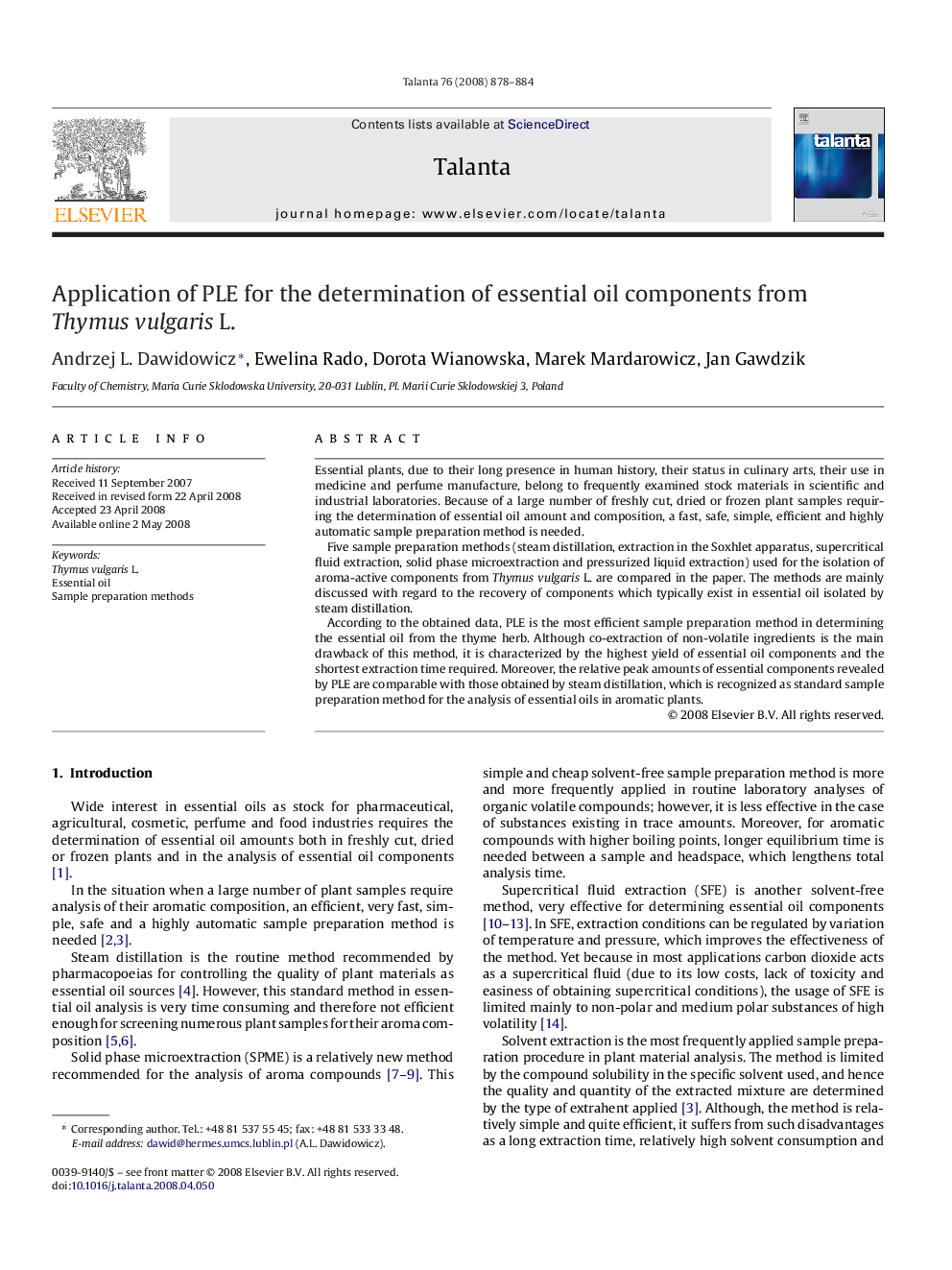| Article ID | Journal | Published Year | Pages | File Type |
|---|---|---|---|---|
| 1243395 | Talanta | 2008 | 7 Pages |
Essential plants, due to their long presence in human history, their status in culinary arts, their use in medicine and perfume manufacture, belong to frequently examined stock materials in scientific and industrial laboratories. Because of a large number of freshly cut, dried or frozen plant samples requiring the determination of essential oil amount and composition, a fast, safe, simple, efficient and highly automatic sample preparation method is needed.Five sample preparation methods (steam distillation, extraction in the Soxhlet apparatus, supercritical fluid extraction, solid phase microextraction and pressurized liquid extraction) used for the isolation of aroma-active components from Thymus vulgaris L. are compared in the paper. The methods are mainly discussed with regard to the recovery of components which typically exist in essential oil isolated by steam distillation.According to the obtained data, PLE is the most efficient sample preparation method in determining the essential oil from the thyme herb. Although co-extraction of non-volatile ingredients is the main drawback of this method, it is characterized by the highest yield of essential oil components and the shortest extraction time required. Moreover, the relative peak amounts of essential components revealed by PLE are comparable with those obtained by steam distillation, which is recognized as standard sample preparation method for the analysis of essential oils in aromatic plants.
